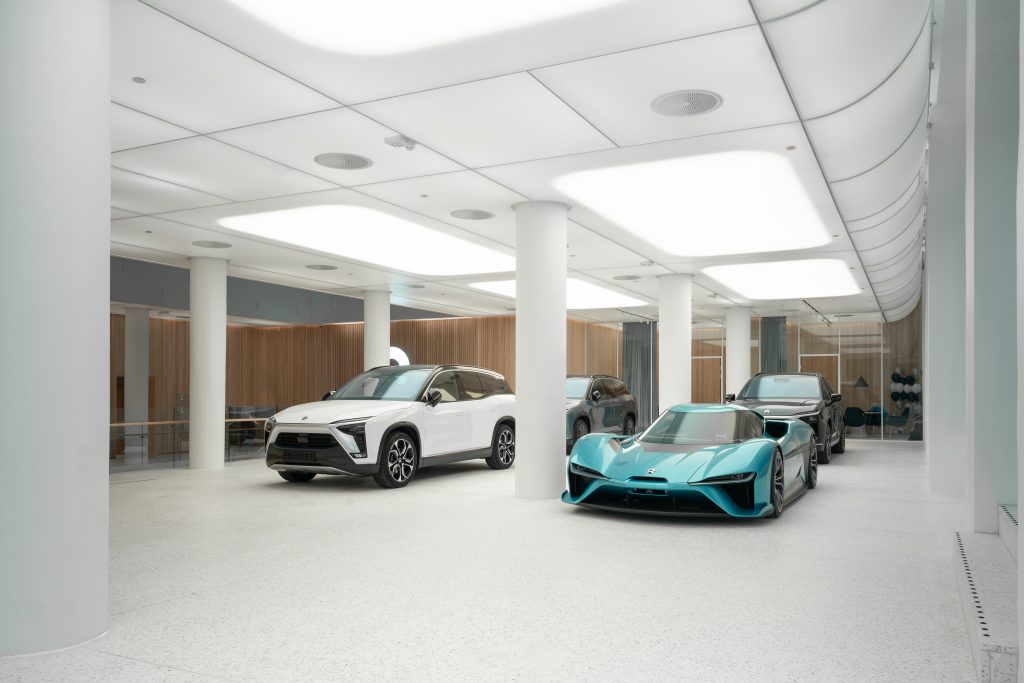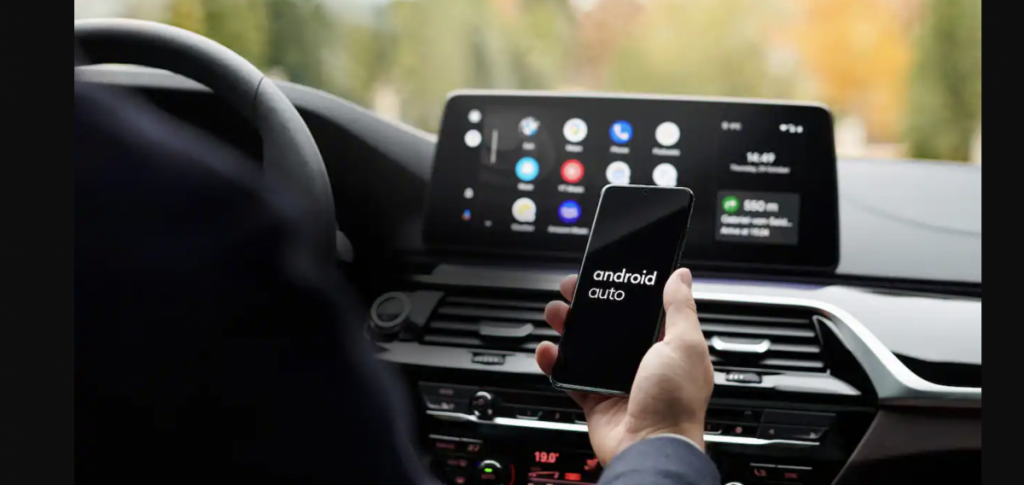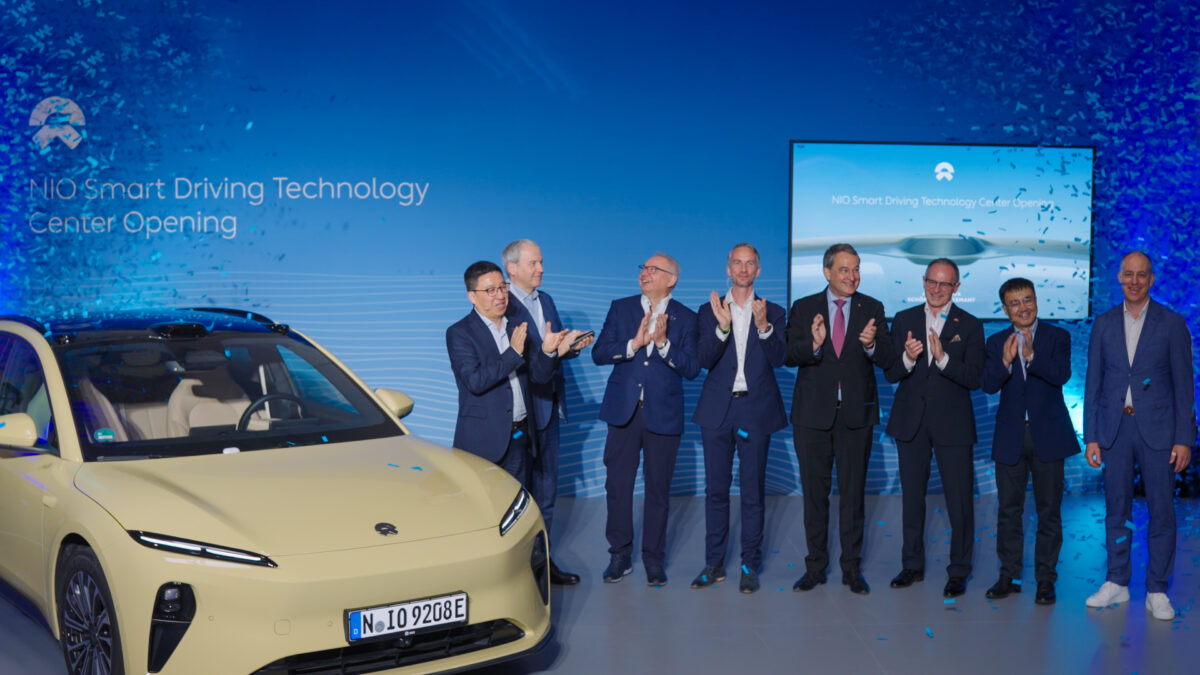The way car buyers think about vehicles is changing. Once, it was all about performance, reliability, and safety. Now, consumers increasingly think of a new car as the ultimate connected device. Personalised entertainment, real-time digital features, and user-centred services all become differentiating capabilities.
Research from Accenture shows that revenue from digitally enabled services is set to rise more than tenfold by 2040. That means, for established OEMs, this is a critical moment. As the software-defined vehicle increasingly becomes the key competitive arena, new profit pools are emerging and new market entrants are moving in to capture them.
User experience is the new battleground
Chinese EV start-up Nio is an example of how the automotive industry is changing. The central ethos of the brand is user experience. And this starts with the sense of community it aspires to build not only through its digital services, but also through the physical spaces it provides (called Nio Houses and Nio Spaces) for members to meet, connect, work and relax.
Of course, the vehicles themselves are what ultimately counts. And here, too, the emphasis is on streamlined customer experience. Drivers and passengers can order services like valet parking and battery replacements directly from the vehicle, as well as using NOMI, the brand’s personal digital assistant, to bring a new kind of emotive and personalised character to the mobility experience. Future plans even include VR services and 3D cinema experiences for passengers.

Stacking up the control of the new ecosystem
As the focus of the whole industry expands from manufacturing vehicles to providing mobility services, the automotive technology stack is expanding. OEMs are now competing across everything from the underlying physical and digital infrastructure (including charging, parking, and vehicle-to-everything (V2X) communication), through vehicle platforms and software platforms, to emerging front-end digital services and mobility experiences.
A key challenge for established OEMs is that this technology stack is much broader than the one envisaged by traditional automotive business models. And some of the fastest growing industry players are targeting the full span, with a “full stack” approach. Take Tesla. While the company has been innovative in its approach to automotive manufacturing and R&D, much of its market value is based on its focus on the future growth of digital mobility and other services. That includes everything from offering its own insurance services to transforming the car interior into an entertainment platform. Not only that, but Tesla’s home chargers and solar panels have the potential to create a whole new parallel energy market.
Full stack or not?
Should established OEMs emulate this kind of full-stack strategy? It offers perhaps the greatest potential for revenue growth and customer loyalty, not to mention total ownership of valuable customer data. But it does require significant investment in infrastructure and technology. And the sheer breadth of the strategy increases the complexity the company must manage across the ecosystem. With investment budgets and resource capacities already stretched, it may simply not be a viable option for some.
It may not even deliver the desired returns. Because a market in which every single OEM is attempting to maintain its own proprietary platforms is unlikely to be sustainable. There simply won’t be enough space for differentiation. Or enough customers to create the critical mass needed to spark a vibrant developer community.
Revenue from digitally enabled services is set to rise more than tenfold by 2040
This is all the more relevant as non-automotive technology giants bring their UX heft into the market. Android Automotive OS, for example, optimises Google’s operating system for use in automotive infotainment systems and has already been integrated in Volvo and Polestar vehicles.
In-vehicle services
However, there are several alternatives to full-stack control to consider. The first is to focus on in-vehicle services, which means addressing several of the higher layers of the stack, including user interfaces and services/applications.
Usually, this will involve partnering with third parties to deliver certain aspects of the stack, which does mean relinquishing some control to other players. But this will often be in layers of the stack where there’s little value to be gained in competing with market-leading solutions, such as operating systems and cloud frameworks. BMW and Mercedes-Benz are examples of OEMs who are embracing partnerships with providers like Google or relying completely on open source.
Domain stacks
Another option is to focus on domain stacks. This means developing specialised services that operate in partnership with third-party hardware and near-hardware software across the stack. Examples include Waymo and Pony.AI, who offer advanced software using AI and machine learning to enable autonomous driving. And Baidu, which provides an operating system for software-defined vehicles.
This approach can be highly effective in the right context. But it can also be restrictive for both the provider and customer. Providers have limited control over hardware quality and thus driver experience, while customers have limited ability to adapt services to maximise the value for their brands.

White label
A third option is to provide white-label platforms to other automakers. This involves selling unbranded offerings—of hardware, software, or both—to OEMs that then market those offerings under their own brands. Existing examples include Flextronics and Qualcomm.
To make this kind of long-term platform play a success, however, OEMs will need to manage complexities in architecture alignment and process governance. They’ll also need to be able to provide extensive maintenance and support to customers of these services.
Find the route to future growth
The above strategies show that there are multiple ways to thrive in the emerging mobility ecosystem. It’s not simply a question of attempting to own the full stack. Nor is it a binary question of build or buy. By partnering with the ecosystem, OEMs can look to own key control points across the stack that enable the desired business models and open up new profit pools.
Such as strategy can still be highly effective and extremely profitable. Look, for example, at how Amazon focused on controlling the backbone of its e-commerce marketplace rather than attempting to own every single component within it.
A market in which every single OEM is attempting to maintain its own proprietary platforms is unlikely to be sustainable
It’s true there are catch-up challenges for traditional OEMs to solve first, including the need to shift to continuous development and shorter cycle times, adopt systems engineering and model-based development (MBSE), adapt the corporate culture for more agile ways of working, and look to attract in-demand software engineering talent. Again, working with partners will be critical in providing the necessary innovation, agility and skills.
OEMs must now choose carefully where they want to play in the software-defined mobility revolution, identifying where they can bring their heritage and core R&D strengths to bear most successfully. The time is now for them to adopt a deliberate, continuous total enterprise reinvention centred around a strong digital core and new ways of working.
About the authors: Juergen Reers is a Managing Director and the Global Lead for Mobility X at Accenture. Samit Ghosh is a Managing Director and the Midwest lead for Accenture Industry X



